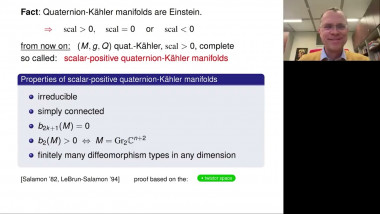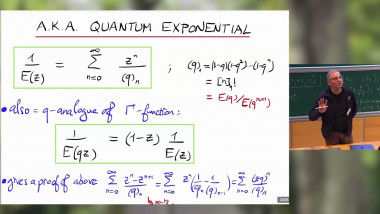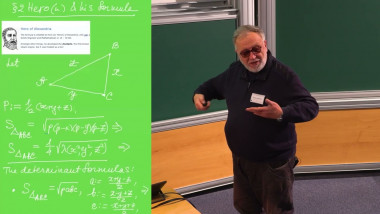Appears in collection : CEMRACS: Coupling multi-physics models involving fluids / CEMRACS : Couplage de modèles multi-physiques impliquant les fluides
At the end of the 70', Littlejohn [1, 2, 3] shed new light on what is called the Gyro-Kinetic Approximation. His approach incorporated high-level mathematical concepts from Hamiltonian Mechanics, Differential Geometry and Symplectic Geometry into a physical affordable theory in order to clarify what has been done for years in the domain. This theory has been being widely used to deduce the numerical methods for Tokamak and Stellarator simulation. Yet, it was formal from the mathematical point of view and not directly accessible for mathematicians.
This talk will present a mathematically rigorous version of the theory. The way to set out this Gyro-Kinetic Approximation consists of the building of a change of coordinates that decouples the Hamiltonian dynamical system satisfied by the characteristics of charged particles submitted to a strong magnetic field into a part that concerns the fast oscillation induced by the magnetic field and a other part that describes a slower dynamics.
This building is made of two steps. The goal of the first one, so-called "Darboux Algorithm", is to give to the Poisson Matrix (associated to the Hamiltonian system) a form that would achieve the goal of decoupling if the Hamiltonian function does not depend on one given variable. Then the second change of variables (which is in fact a succession of several ones), so-called "Lie Algorithm", is to remove the given variable from the Hamiltonian function without changing the form of the Poisson Matrix.
(Notice that, beside this Geometrical Gyro-Kinetic Approximation Theory, an alternative approach, based on Asymptotic Analysis and Homogenization Methods was developed in Frenod and Sonnendrücker [5, 6, 7], Frenod, Raviart and Sonnendrücker [4], Golse and Saint-Raymond [9] and Ghendrih, Hauray and Nouri [8].)
![[1244] Minimal surfaces via equivariant eigenvalue optimization](/media/cache/video_light/uploads/video/SeminaireBourbaki.jpg)















